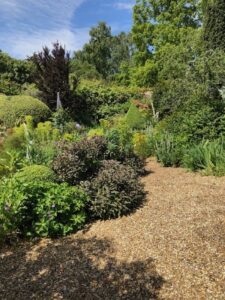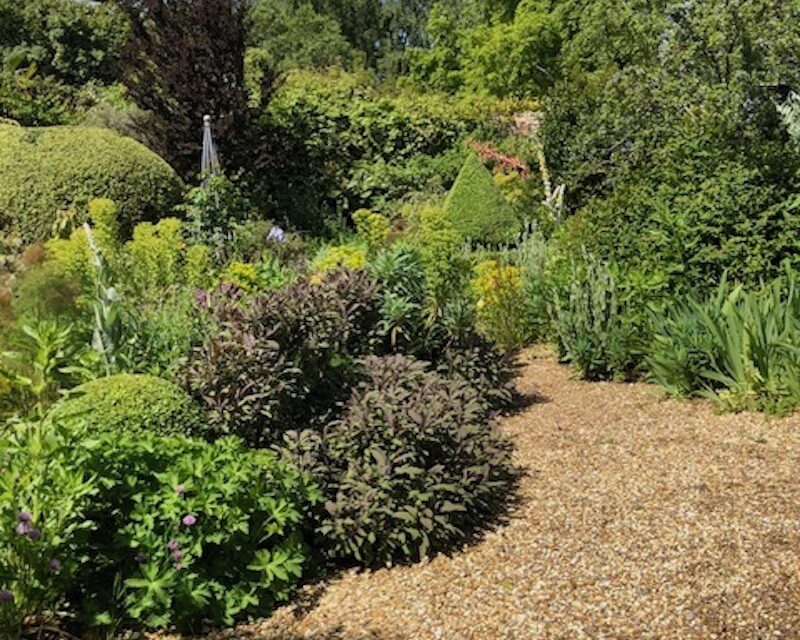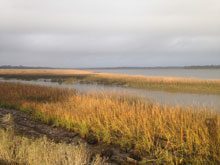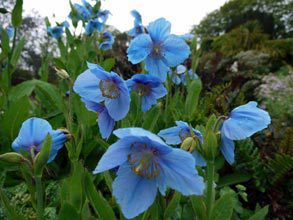
Gravel garden
While my garden is resting, I am using this time to plan for our increasingly earlier spring. I am planting some seeds so that I will have early flowers as well as annual herbs. If I was a vegetable gardener, I would be starting some crops that will take some cool spring weather. I prefer to buy my veggies at the Port Royal Farmer’s Market. I Just do not have space for vegetables and I am the first to admit that I am not good at edibles except for herbs. I like to support our local farmers and they do a much better job than I do. I found that my single small tomato that I got each year was costing me about $25 for supplies, fertilizer, compost, etc. It is hardly worth it.
Our traditional last frost is March 15th so I look at the instructions on seed packets and plant accordingly to germination and maturation rates. I love to plant zinnias, marigolds, and tithonia so they get a head start and I keep our pollinators happy. You do not need to have a cold frame or greenhouse- a sunny window sill will do.
I am also planning to expand my gravel garden that I attempted last year. It worked well for certain plants that like dry climates so it is going to be enlarged this year. Gravel gardens are very popular in Britain and some European countries. It is in contention who first started gravel gardening. Beth Chatto (1923-2018), an amazing plantswoman and garden designer, is usually given credit. She published her book, The Dry Garden, in 1978. Joyce Robinson (1904-1996) experimented with a gravel garden at Denman’s Garden as early as 1970, so it is a toss up. If you ever visit England, be certain to visit Denman’s Garden in West Sussex where the gravel garden is still beautifully maintained and the entire garden is a delight to visit and my personal favorite.
How do you make a gravel garden? I received instruction from the owner of Denman’s. I removed the layer of sod because my garden was in part of my ever shrinking lawn. I made certain that there were no weeds or roots and then I added about six to eight inches of compost. I planted my perennials into the compost and “mulched” thickly (five-six inches) of pea gravel. I am picky about pea gravel so I searched until I found just what I wanted. The plants grow right through the gravel into the compost. It is relatively weed free and for Mediterranean type plants like agave, rosemary, cardoons, and succulents, they loved it. I had flowers in there as well such as calendula and they flourished until the heat killed them off at the end of July. I also have a cuphea, a woody perennial from Mexico, that is still very happy with its blanket of gravel and blooms pretty much all winter long. If you have a problem spot in your yard where there is poor soil and nothing seems to grow, try a gravel garden. Put it in now before our weather gets steamy. January is my favorite time to do garden projects and you can move perennials and shrubs now. Just remember to water them for a good two weeks after they have been transplanted.
I have also decided to make some gardening resolutions this year. It is certainly more cheerful than the usual “lose ten pounds.” Resolution 1 – I tend to be a plunker. I tend to plant one little plant here and one little plant there. I will work hard at over coming this “plant plunker syndrome.” I will purchase multiples of each variety and plant them in a sweep or block for maximum impact. Resolution 2 – Gertrude Jekyll, a great English garden designer, wrote that if a plant doesn’t please you or makes you guilty because it has not thrived, get rid of it. That may make her the Marie Kondo of gardening. If I have a plant that does not give me “joy,” I will not lay hands on it and thank it, but I will ruthlessly pull it out and compost it. If I have tried and it has died, I will not feel guilty. Resolution 3 – I will try to get out more to just enjoy my garden and do a walk about. Another quote from Gertrude Jekyll: “The purpose of a garden is to give its owner the best and highest earthly pleasure.
May your garden give you great pleasure in this new year.









